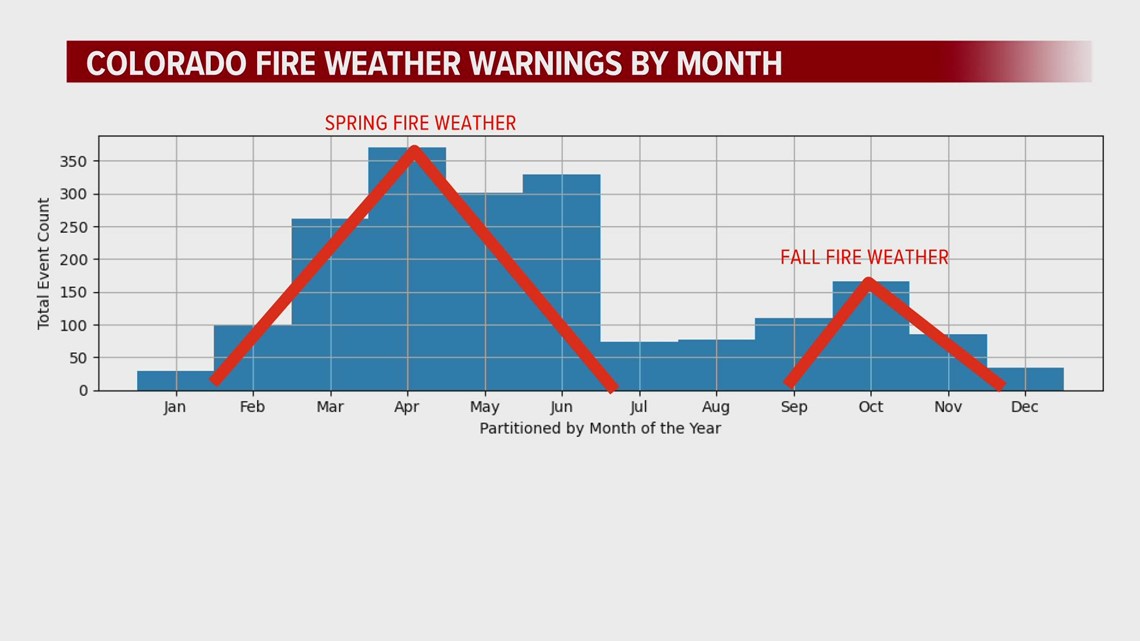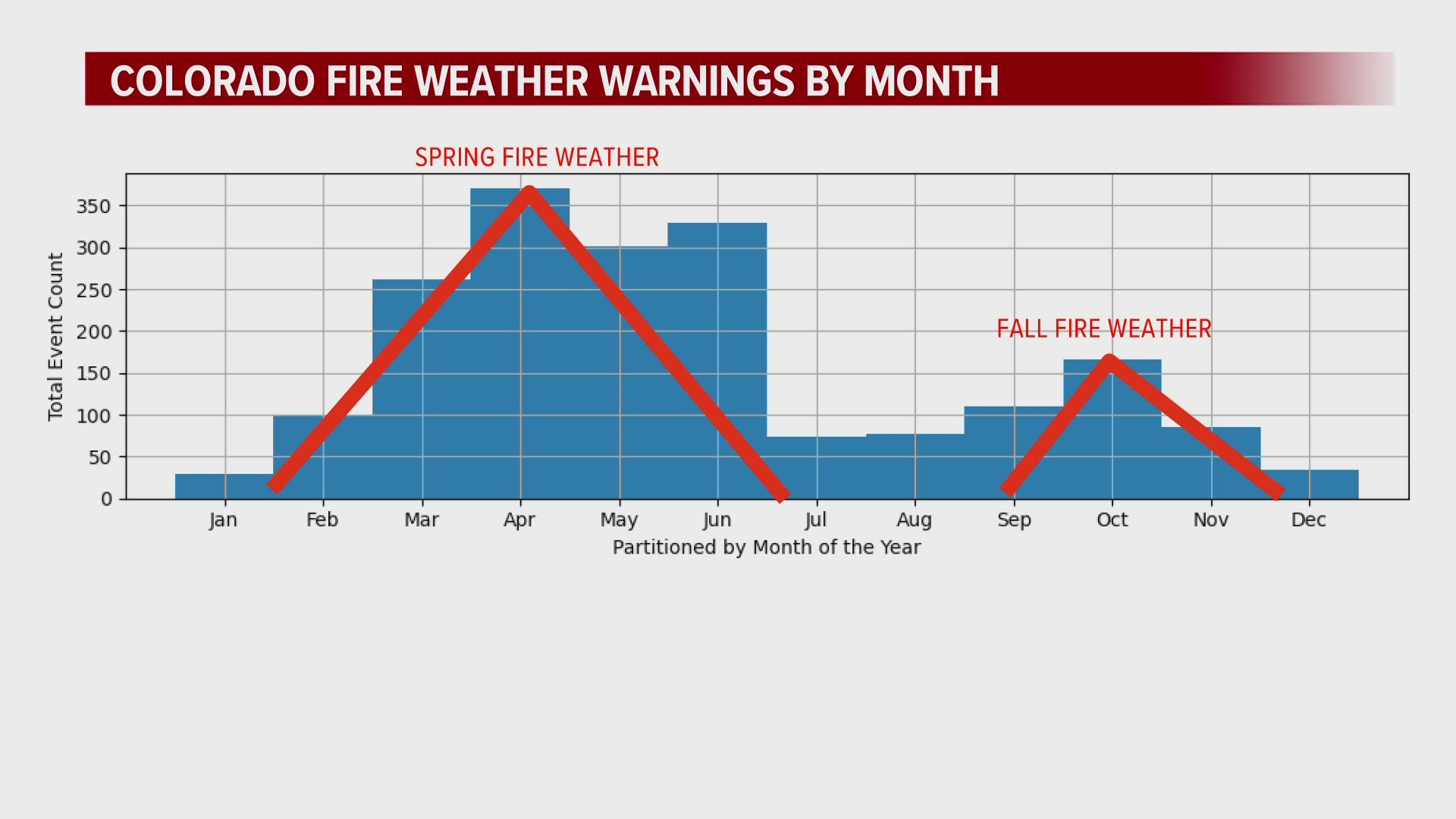DENVER — Red Flag warnings covered most of the northeast plains on Tuesday, along with parts of Pueblo and Huerfano counties. It's the second time this October with fire weather warnings in Colorado.
The primary peak of fire weather in Colorado is in April, but the data shows there’s a secondary peak in October. And the reasons for both peaks are the same – dry grass and strong winds.
October is one of the windiest months on the Front Range and the eastern plains, and high winds make it easier for fires to start and they can spread fire rapidly.


Over the summer months, the jet stream retreats north into Canada, so wind is not typically an issue. The humidity levels are also higher from mid-June through mid-September.
The grasses are also green in the summer helping make fires less likely.
In October, the grasses are starting to cure, which means they are either dying or going into dormancy, and temperatures can still be warm enough to add a final ingredient to fire weather.
It is less common to have fire weather over the winter months because of the colder temperatures and occasional snow cover, but we have seen that fire weather can emerge at any time of year.
The Marshall fire in 2021, and the Logan-Phillips fire in 2017 were both winter-time fires that started and spread rapidly in dry grasses. In both cases, it was unseasonably warm, and the winds were stronger than 70 mph.
SUGGESTED VIDEOS: Colorado Climate

